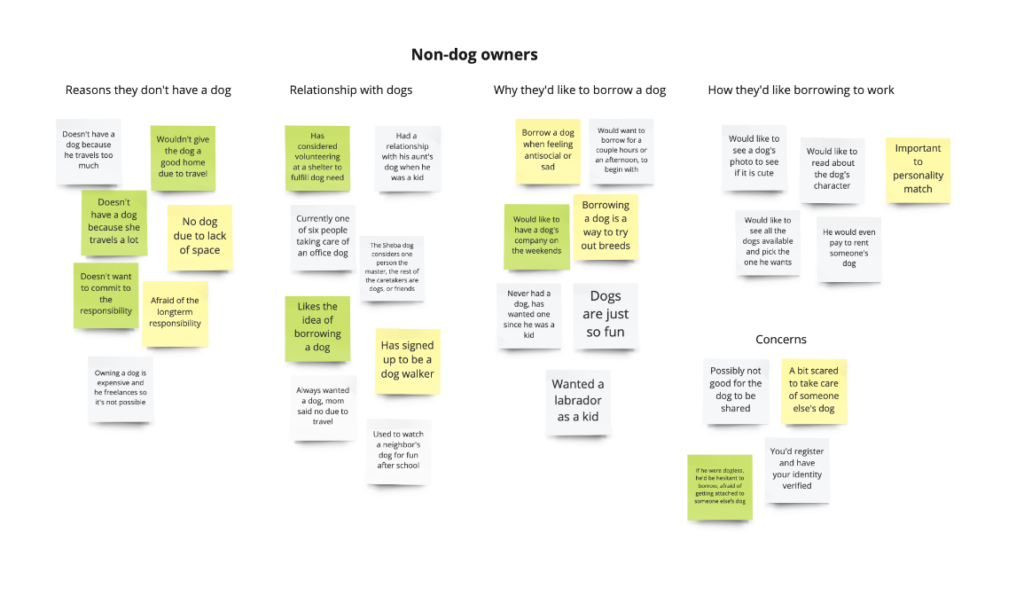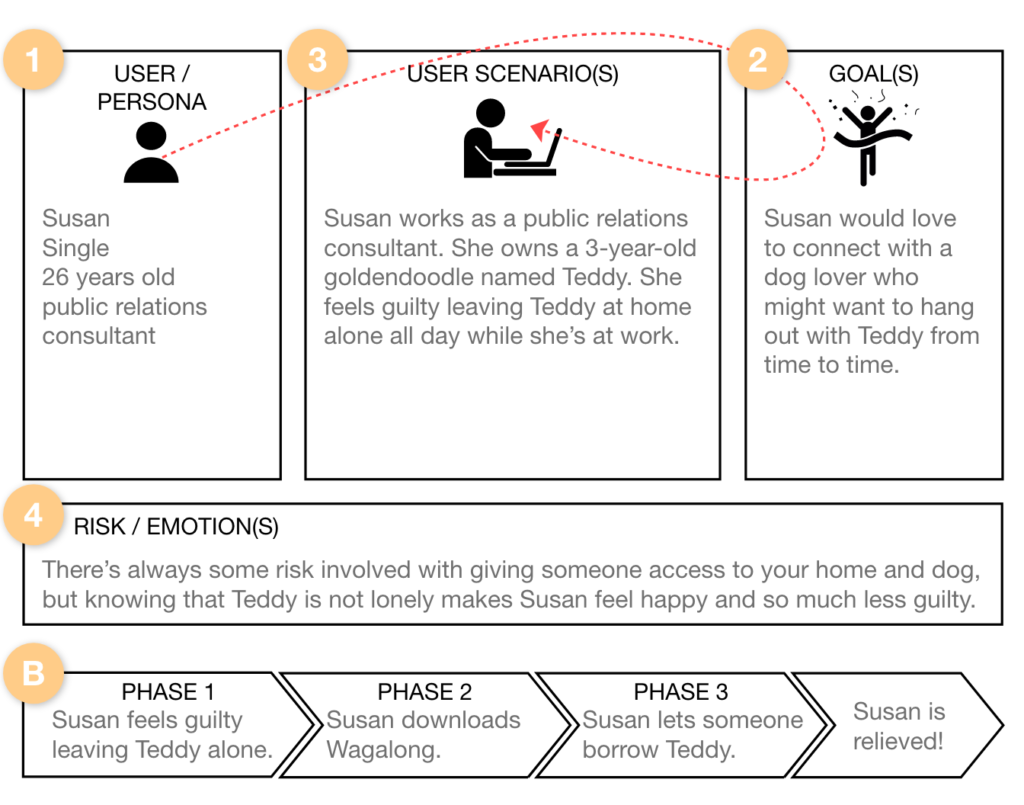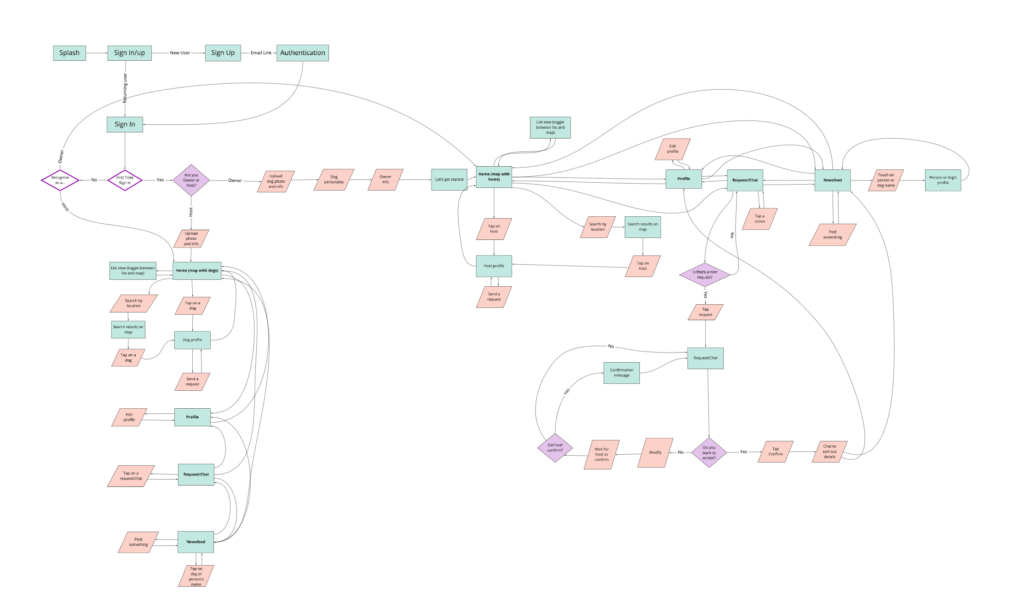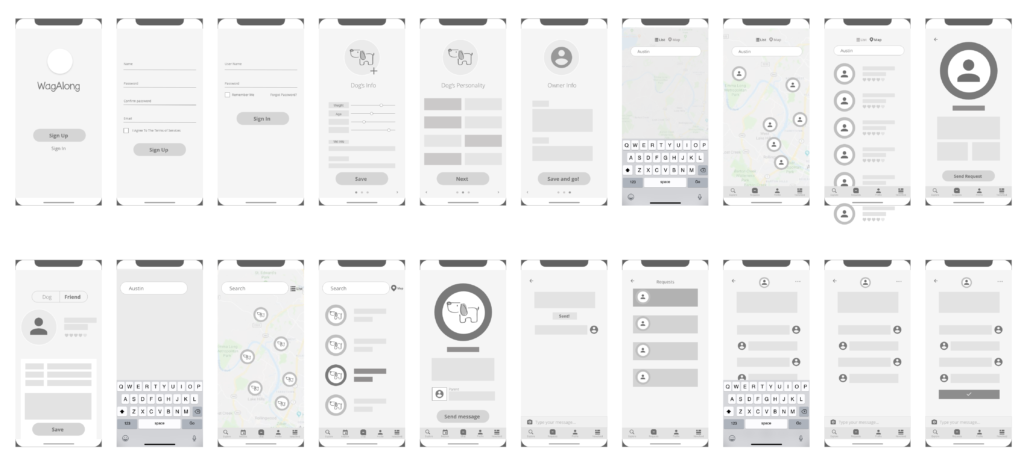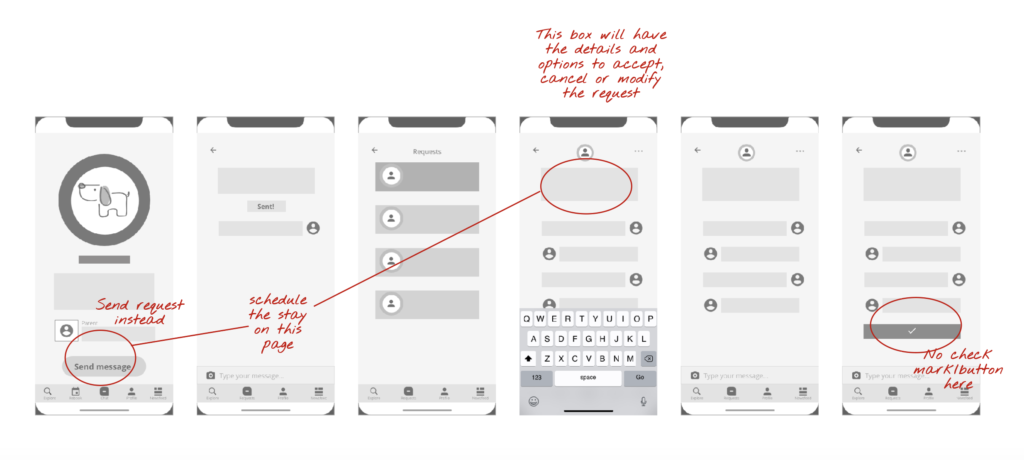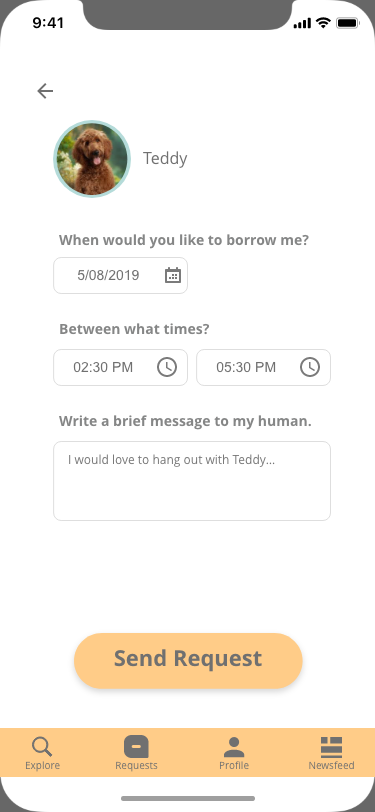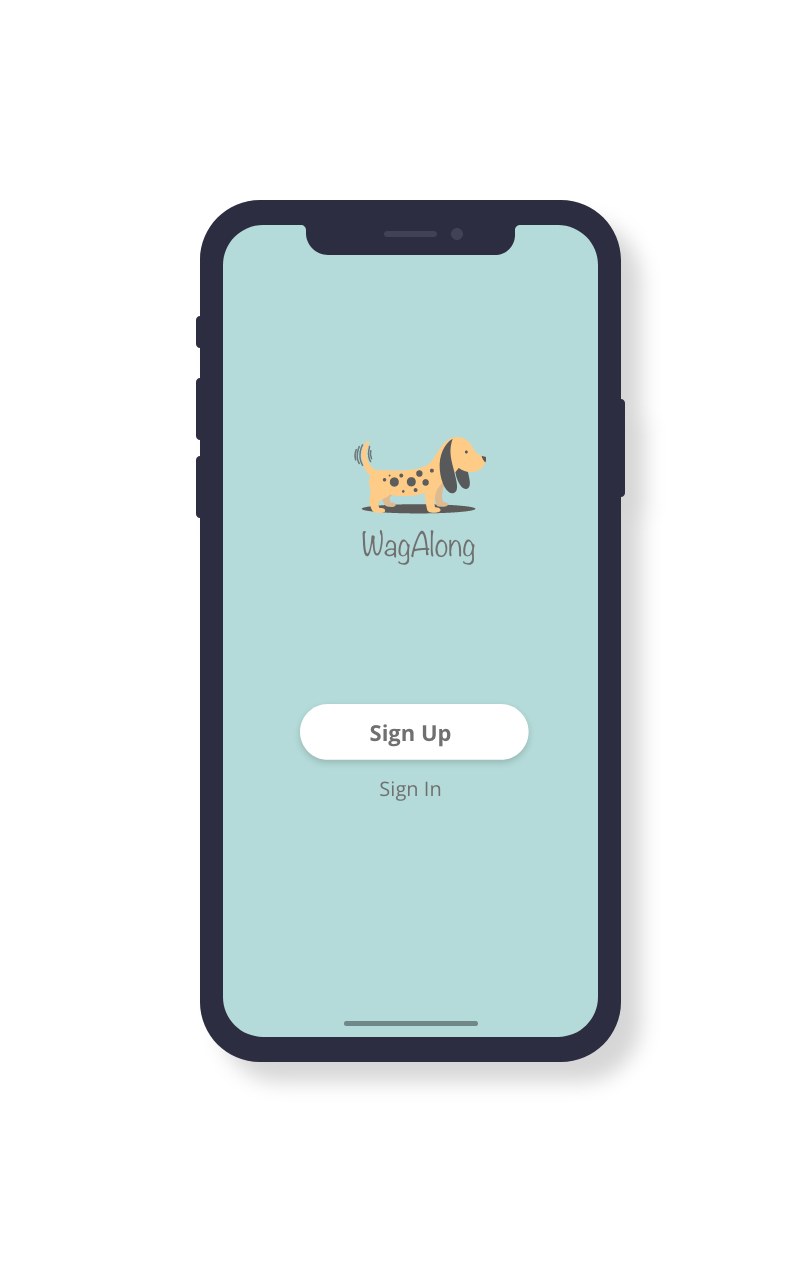
WagAlong
A dog sharing app that connects busy dog owners
with their dog-deprived neighbors
The problem:
There are lots of dog-loving people out there who would like to enjoy the company of a dog, but can’t commit to the long-term responsibility of owning one. Meanwhile, busy dog owners feel guilty leaving their dogs home alone for long periods.
The solution:
Wagalong facilitates dog sharing between owners and their neighbors who crave canine companionship.
Team:
2 people
My role:
UX research, UX design, UX writing
Tools:
Adobe XD, Miro, Trello
Time frame:
3 weeks

